6 Azelaic Acid Benefits For Skin, How To Use It, & Side Effects
Unlock the science behind why azelaic acid is becoming a skincare essential.
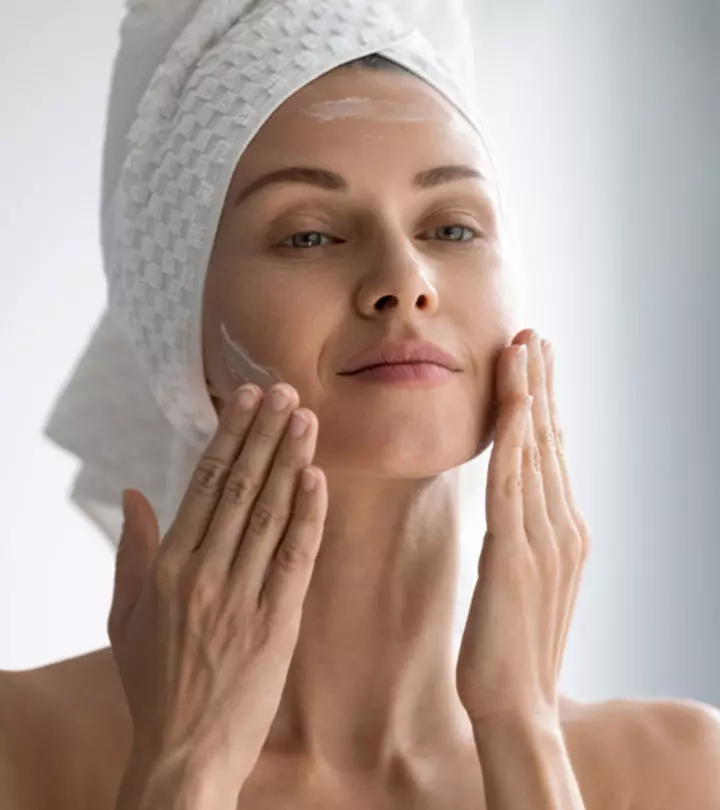
Image: Shutterstock
Azelaic acid is a powerful antioxidant that may resolve many skincare woes. You can also use azelaic acid for skin tone correction, reducing skin blemishes, discolorations, and improving skin texture. It also suits almost all skin types.
It is often used in skin care formulations. If your skin breaks out easily and has issues like scarring and pigmentation, you may consider using azelaic acid. It also helps minimize skin sensitivity.
This article delves into the benefits of azelaic acid, how to use it on your skin, and side effects. Keep reading to know more.
 Know Your Ingredient: Azelaic Acid
Know Your Ingredient: Azelaic AcidWhat Is It?
A naturally occurring dicarboxylic acid with anti-inflammatory and antioxidant properties.
What Are Its Benefits?
Helps exfoliate dead skin cells, reduces acne, and may help treat rosacea and melasma.
Who Can Use It?
People who have acne, pigmentation, melasma, or rosacea.
How Often?
On alternate days in case of sensitive skin. Otherwise, regularly.
Caution
People with sensitive skin may experience redness, swelling, and skin irritation. If you experience any side effects, consult your dermatologist immediately.
In This Article
What Is Azelaic Acid?
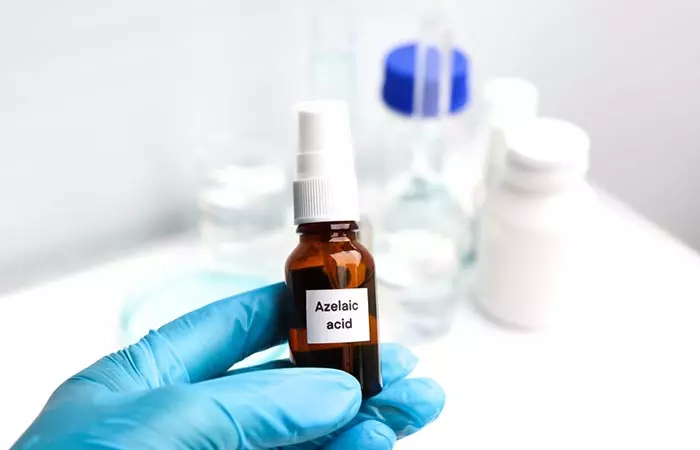
Azelaic acid is chemically composed of dicarboxylic acid. It is produced naturally on your skin by a type of yeast called Malassezia furfur (1). But you can also synthesize it in a laboratory using grains and cereals such as barley, wheat, and rye. The lab-engineered form is useful in skin care products due to its stable and beneficial properties.
Most of the formulations for topical azelaic acid vary between 15 to 20 percent concentrations. While it is available in lower concentrations too, using it in combination with other ingredients is much more efficient than when used alone.
Are you wondering how you can incorporate azelaic acid into your daily skin care routine? Read to know.
Key Takeaways
- Azelaic acid is an antioxidant naturally produced on your skin, and its lab-engineered form is available as a gel, foam, or cream.
- Azelaic acid can reduce acne, hyperpigmentation, and improve overall skin health.
- Individuals with sensitive skin may experience side effects such as redness, swelling, and a slight burning sensation.
How To Use Azelaic Acid

Azelaic acid is available in gel, foam, and cream forms. These different forms help ease the application process when used on various areas of your body.
The foam version is more suitable if you need to cover a large area of your skin, such as your back. An azelaic acid cream or gel would suffice to cover smaller areas, like your face.
Here is how you can use azelaic acid on your skin:
- Cleanse your face thoroughly to allow your skin to absorb the product.
- Consider applying an AHA (like glycolic or lactic acid), BHA, or retinol first. It will help open up your skin and readily accept azelaic acid.
- Apply a thin layer of azelaic acid to dry skin twice a day.
- Follow up with a hydrating moisturizer. In the mornings, you can apply sunscreen with SPF 30 after using azelaic acid.
For sensitive skin, experts recommend using azelaic acid only once a day. Use a pea-sized amount while applying it to a smaller area (like your face or neck).
Azelex and Finacea are two popular brands of topical azelaic acid. These products contain about 15 percent concentration of azelaic acid.
Azelaic acid may tackle breakouts, inflammation, uneven and darker skin tone, among other skin concerns. Learn about the benefits of this multifunctional skincare ingredient below.
What Are The Benefits Of Using Azelaic Acid?

1. Offers Gentle Exfoliation
If you have congested skin or clogged pores, you can use azelaic acid as an exfoliant
. Upon application, the ingredient penetrates the pores and helps remove any impurities. It exfoliates the superficial dead skin cells that cause an uneven, dull skin tone. More research is warranted to further understand the exfoliating action of azelaic acid.
2. May Reduce Acne
Azelaic acid has anti-inflammatory and anti-bacterial properties that can control acne lesions
(2). Research demonstrates its bactericidal role against P. acne, a common cause of breakouts (3). Azelaic acid may also be used on sensitive skin as it soothes any irritation on the face. It also may improve general redness caused by inflammation.
A skin care blogger shares how azelaic acid helped completely transform their skin health. She writes, “I started using a 20% azelaic acid cream five days a week and then washing my face only at night time with a gentle cleanser and moisturizer. After two months, I noticed a drastic improvement in my skin. The redness was gone, my skin was much more hydrated, and my acne was significantly reduced (i).”
3. May Even Out Skin Tone
Azelaic acid may help even out your skin tone as it inhibits enzymes linked to hyperpigmentation. It can reduce any discolorations or dark spots in your complexion due to acne breakouts. It also may help treat melasma (4), (5).
4. May Help Treat Rosacea
If your face is prone to red patches and irritation due to rosacea, azelaic acid may offer some benefit.
The active ingredient reduces inflammation and fights against secondary infection in rosacea (6). Plus, an azelaic acid gel is gentle enough to be used on sensitive skin and may also improve your overall skin tone.
5. May Reduce Blackheads
A formulation made with azelaic acid has demonstrated notable efficacy in addressing blackheads and related skin concerns. Research suggests that it serves as an effective treatment for comedonal acne as well as various forms of inflammatory acne, including papulopustular, nodular, and nodulocystic acne. Blackheads are a type of comedones, thus azelaic acid may help treat them. While it is generally well-tolerated, some individuals may experience mild and local irritation as the primary adverse effect. Nevertheless, whether used as a standalone treatment or in combination with other therapies, topical azelaic acid appears to be effective in addressing blackheads (7).
6. Could Be Safe For Use In Pregnancy
Azelaic acid may safely manage acne, rosacea, and pigmentations during pregnancy (8). Nevertheless, it is always best to speak to a dermatologist before using this ingredient during this period.
In one of the pilot studies published in the Journal of Clinical and Aesthetic Dermatology, researchers examined 15% azelaic acid foam to treat folliculitis, a common skin condition characterized by inflammation of hair follicles. Over the course of four weeks of using azelaic acid foam, the patients reported a statistically significant reduction in folliculitis-related pain.

Effect Of Azelaic Acid On Folliculitis
Source: Examining 15% Azelaic Acid Foam for the Treatment of Folliculitis: A Pilot StudyThe comedolytici The ability to prevent comedones, open and closed skin pores (blackheads and whiteheads) that form due to dead skin cells and bacteria. , anti-inflammatory, and exfoliating properties of azelaic acid are making it popular among skincare enthusiasts as an anti-acne treatment. But how does this active ingredient help fight acne? Find out more below.
How Does Azelaic Acid Fight Acne?
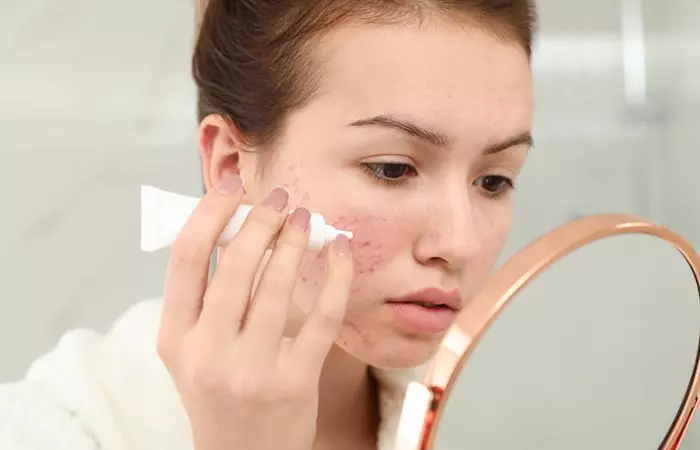
Azelaic acid works as a useful acne treatment by inhibiting certain enzymes. These enzymes influence the chemical activity within the superficial layer of your skin. This enzymatic inhibition prevents the DNA synthesis of the acne-causing bacteria (9).
The antibacterial properties of azelaic acid may combat acne eruptions and prevent a recurrence (3). The ingredient is thought to encourage cell turnover and potentially help reduce acne scars and dark spots. Cell turnover is the process of shedding old layers of your skin and replacing them with new, healthy layers. Enhanced cell turnover rate may help the skin renew itself faster.
 Quick Tip
Quick TipHow Does Azelaic Acid Compare With Other Treatments?
Azelaic acid can exfoliate the skin. However, unlike the other acids (alpha hydroxy acid, glycolic acid, and salicylic acid), azelaic acid is not strong enough as a chemical peel.
Skincare products with azelaic acid require more time to take effect and are less likely to irritate your skin. Due to its slow action, azelaic acid works best in combination with other forms of acne treatment. If used in combination, it may address multiple skin issues, including age-related skin concerns and stubborn acne. Consult your doctor for more information in this regard.
 Quick Tip
Quick TipAzelaic acid offers several skin benefits. But is it safe to be included in your skincare routine?
Can You Use Azelaic Acid Every Day?
Yes, azelaic acid can be safely used daily. The products are generally non-toxic and well-tolerated by most. However, if you have extremely dry, sensitive, or acne-prone skin, use this treatment on alternate days. Once your skin has gotten used to azelaic acid, you can slowly increase the frequency of application.
For advanced skin conditions, it is best to consult a dermatologist. They can guide you better in choosing the right treatment for you.
Although azelaic acid can benefit your skin in many ways, it may have certain adverse effects. Read on to know more.
Azelaic Acid: Side Effects And Precautions

People with sensitive skin or eczemai A common skin condition that causes itchiness and inflammation due to stress or exposure to an allergen. may experience irritation on applying azelaic acid to their face. Some other side effects of using azelaic acid on your skin include:
- Slight burning or tingling sensations (10)
- Skin peeling or flaking at the applied area
- Dry, itchy skin
- Redness and swelling
Kelly Driscoll, another skin care blogger, discussed how azelaic acid had initially helped treat her skin. However, as she continued using it regularly even after her skin was better, the overuse compromised her skin barrier. She writes, “I committed myself to stopping the azelaic acid, and guess what? My skin actually started to look clearer for the first time in months and my barrier started to make rapid progress. All-in-all it took about 5 weeks after stopping chemical exfoliation for my barrier to be completely healed (ii).”
Anecdotal evidence suggests that azelaic acid may also cause breathing difficulties, fever, joint aches, and tightness of the chest. However, these side effects are very rare.
If you experience any side effects, stop using the product and seek medical assistance. You can perform a patch test before using the products to determine if you are sensitive to them.
When you apply azelaic acid, remember to follow up with a moisturizer and sunscreen. The ingredient strips the superficial layer of your skin and may make it vulnerable to environmental damage. Also, avoid using astringents and strong cleansers when you use azelaic acid skincare products.
Infographic: Everything You Need To Know About Azelaic Acid
Azelaic acid works well for mild to moderate acne and is available in OTC products and prescription-strength formulations. Its potential lies in its antibacterial and free radical neutralizing properties, which also make it quite effective for managing pigmentation-related issues. The infographic below offers a sneak peek into this gentle skin care ingredient. Take a look.
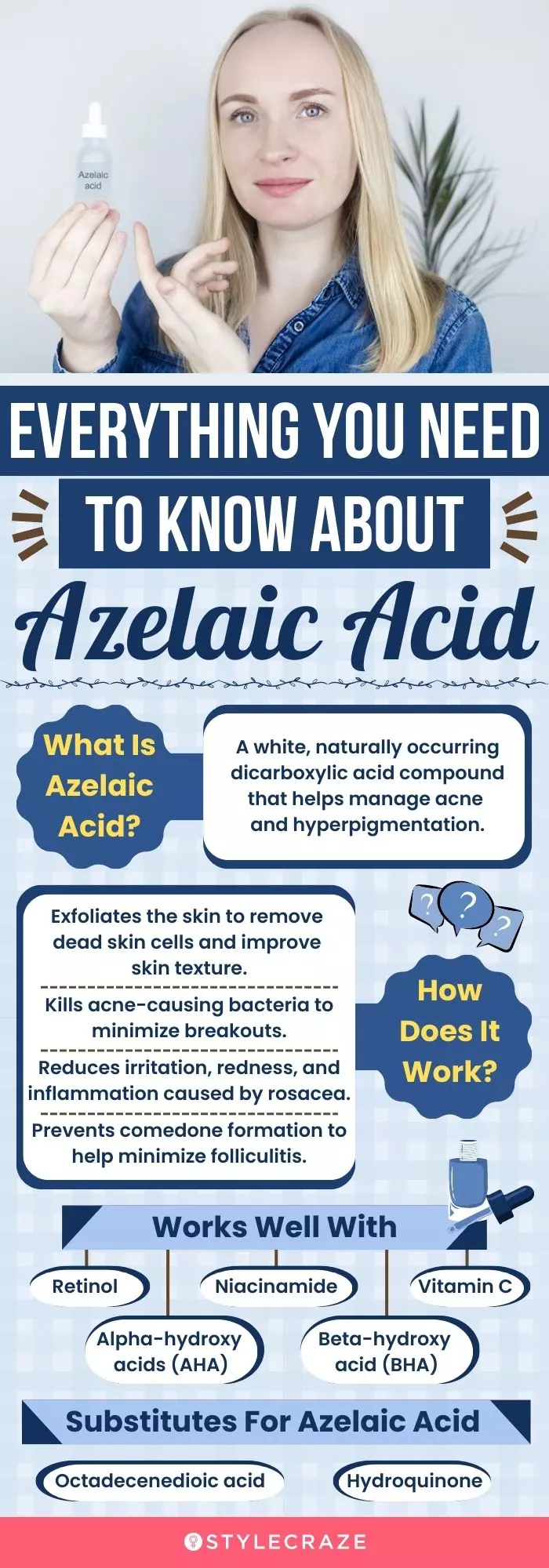
Illustration: StyleCraze Design Team
Takeaway
If your skin is prone to scarring and breakouts, azelaic acid is one of the perfect ways to tackle them. Azelaic acid’s stable and beneficial properties help resolve many skin care woes, including blemishes, uneven skin tone, discolorations, and texture. You may use azelaic acid available as a gel, foam, or cream. The several benefits of this ingredient include exfoliation, acne management, and rosacea treatment. Though azelaic acid is safe for daily use, you may use it on alternate days if you have extremely sensitive or dry skin. Consult your doctor if you experience any side effects. Lastly, check out our skin care acids guide to learn about other beneficial skin care ingredients.
Frequently Asked Questions
Is azelaic acid better than retinol?
Yes, azelaic acid is more effective and well-tolerated for acne treatment in comparison to retinol (11).
Is azelaic acid better than vitamin C?
Yes, azelaic acid is more effective in treating melasma than vitamin C (12).
Is azelaic acid effective in treating keratosis pilaris?
Keratosis pilaris is a common skin condition characterized by small, rough, and bumpy patches on the skin. They usually appear on the arms, thighs, and cheeks and develop due to keratin buildup in the hair follicles. Azelaic acid may help to reduce the appearance of redness, lesions, and inflammation associated with keratosis pilaris (13).
How long does it take to see results from using azelaic acid?
The effects of azelaic acid’s effects depend upon the dosage and strength of the product. Anecdotal evidence suggests that azelaic acid might take 6-8 weeks to show visible results. Consult your doctor to understand the expected time frame for seeing the results of this treatment.
Azelaic acid is a wonderful skincare ingredient and can be a solution for numerous skin concerns. Check out the video below to learn why you should add it to your beauty routine today!
Personal Experience: Source
StyleCraze's articles are interwoven with authentic personal narratives that provide depth and resonance to our content. Below are the sources of the personal accounts referenced in this article.
i. Stop Washing Your Face in the Morning: An Amazing Skincare Transformation with Azelaic Acidhttps://medium.com/@xProductGuru/stop-washing-your-face-in-the-morning-an-amazing-skincare-transformation-with-azelaic-acid-2fc7f15bc73e
ii. The Complete Guide To Healing Your Moisture Barrier
https://iamkellydriscoll.com/2019/03/18/the-complete-guide-to-healing-your-moisture-barrier/
References
Articles on StyleCraze are backed by verified information from peer-reviewed and academic research papers, reputed organizations, research institutions, and medical associations to ensure accuracy and relevance. Read our editorial policy to learn more.
- Compound summary Azelaic acid
https://pubchem.ncbi.nlm.nih.gov/compound/Azelaic-acid - Clinical and laboratory studies on treatment with 20% azelaic acid cream for acne
https://europepmc.org/article/med/2528256 - [Azelaic acid in the treatment of acne]
https://pubmed.ncbi.nlm.nih.gov/2530163/ - Evidence-Based Treatment for Melasma: Expert Opinion and a Review
https://link.springer.com/article/10.1007/s13555-014-0064-z - Combination of glycolic acid peel and topical 20% azelaic acid cream in melasma patients: efficacy and improvement in quality of life
https://onlinelibrary.wiley.com/doi/abs/10.1111/jocd.12260 - Rosacea, Reactive Oxygen Species, and Azelaic Acid
https://www.ncbi.nlm.nih.gov/pmc/articles/PMC2958186/ - Azelaic acid. A review of its pharmacological properties and therapeutic efficacy in acne and hyperpigmentary skin disorders
https://pubmed.ncbi.nlm.nih.gov/1712709/ - Treatment of Acne in Pregnancy
https://www.jabfm.org/content/29/2/254.short - Formulation, characterization, and in vitro testing of azelaic acid ethosome-based cream against Propionibacterium acnes for the treatment of acne
https://pubmed.ncbi.nlm.nih.gov/31041186/
- Azelaic acid 15% gel: in the treatment of papulopustular rosacea
https://pubmed.ncbi.nlm.nih.gov/14979745/ - Clinical studies of 20% azelaic acid cream in the treatment of acne vulgaris. Comparison with vehicle and topical tretinoin
https://pubmed.ncbi.nlm.nih.gov/2528257/ - A Clinical Study of Melasma and a Comparison of the Therapeutic Effect of Certain Currently Available Topical Modalities for its Treatment
https://www.ncbi.nlm.nih.gov/pmc/articles/PMC3667296/ - Treatment of Keratosis Pilaris and Its Variants: A Systematic Review
https://www.researchgate.net/publication/344128153_Treatment_of_Keratosis_Pilaris_and_Its_Variants_A_Systematic_Review
Read full bio of Dr. Swati Mutha
Read full bio of Arshiya Syeda
Read full bio of Ramona Sinha
Read full bio of Swathi E







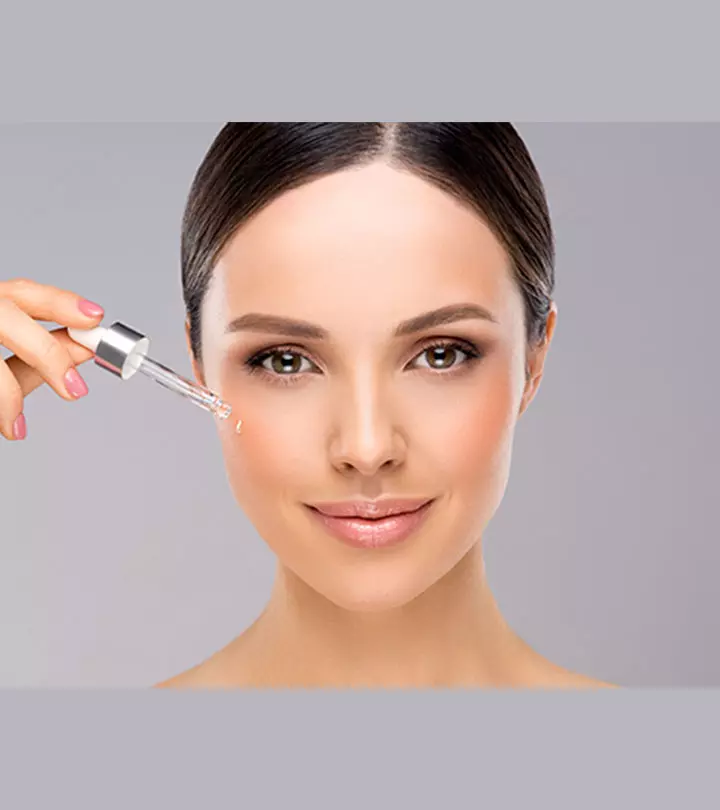


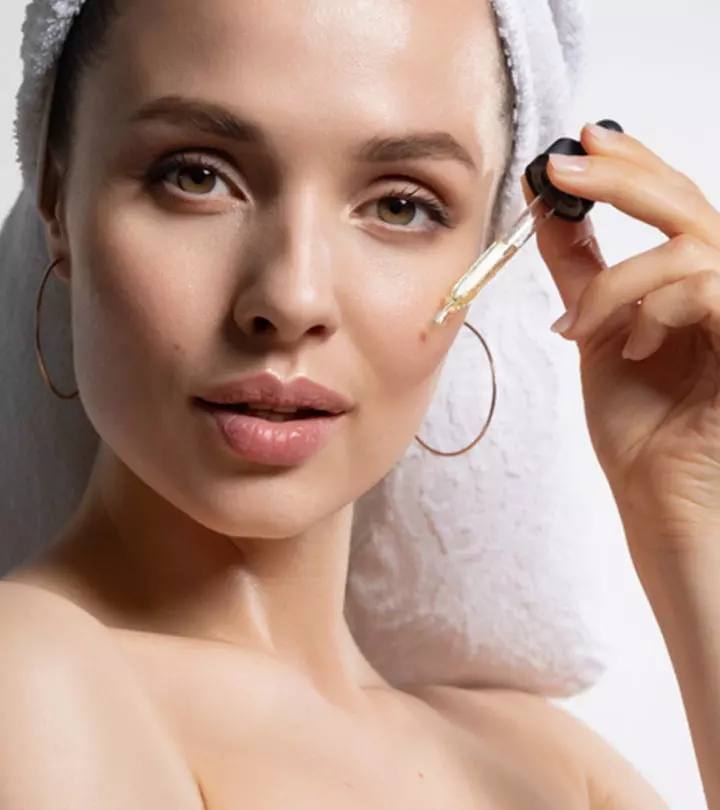


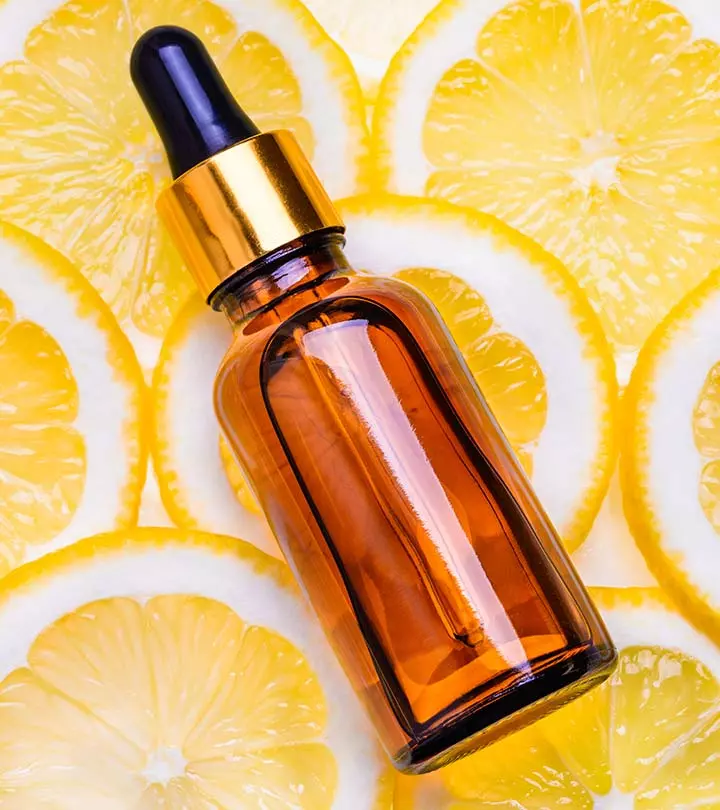
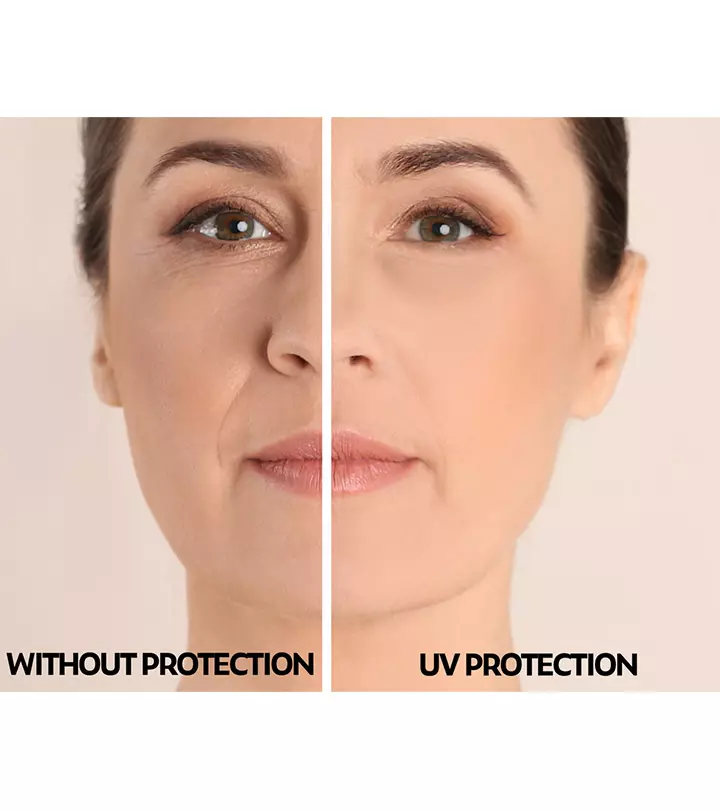
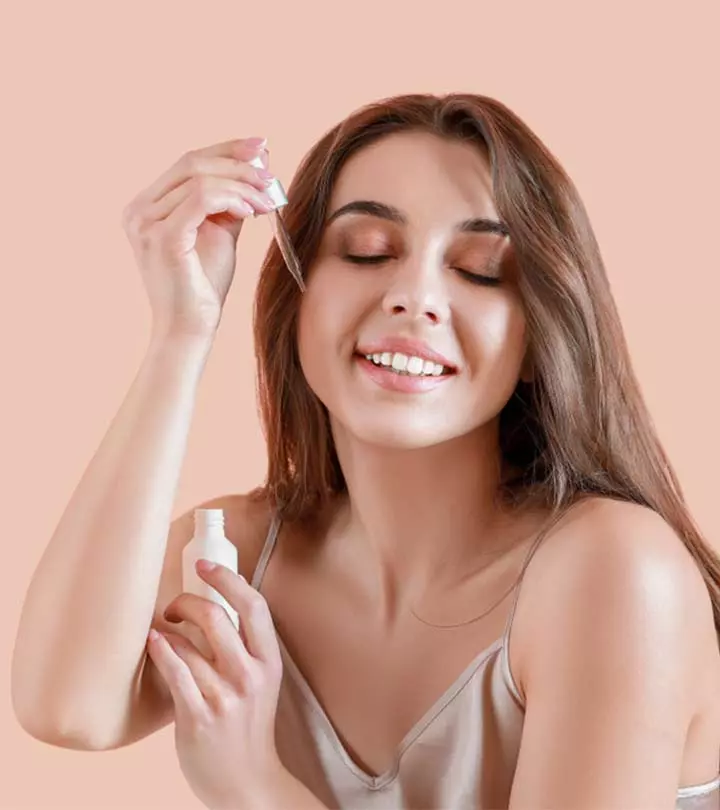


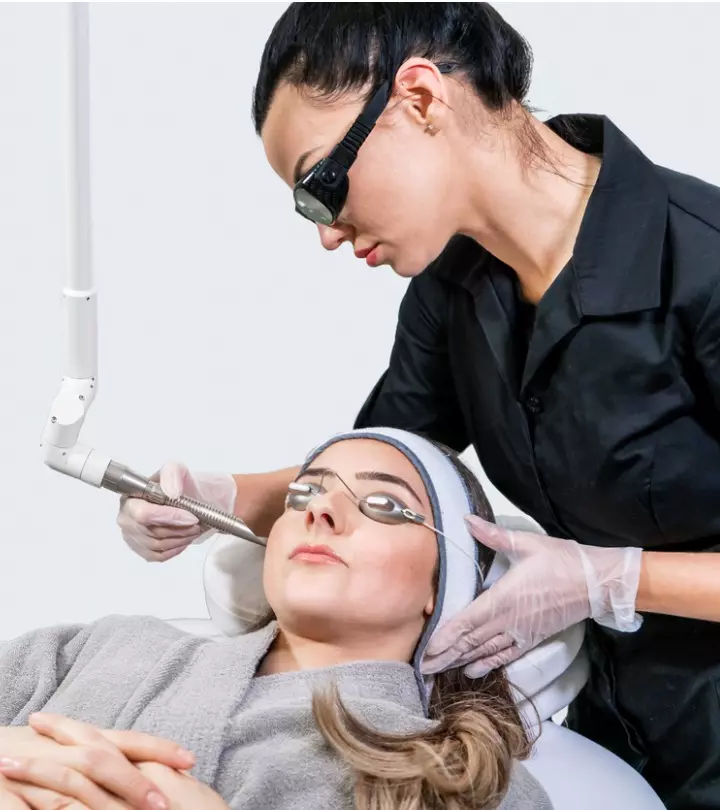
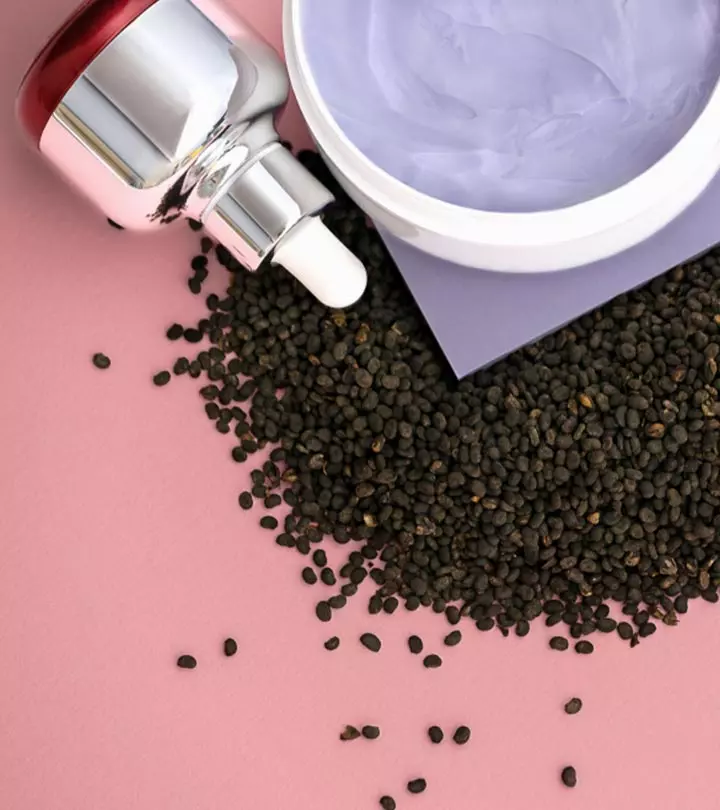




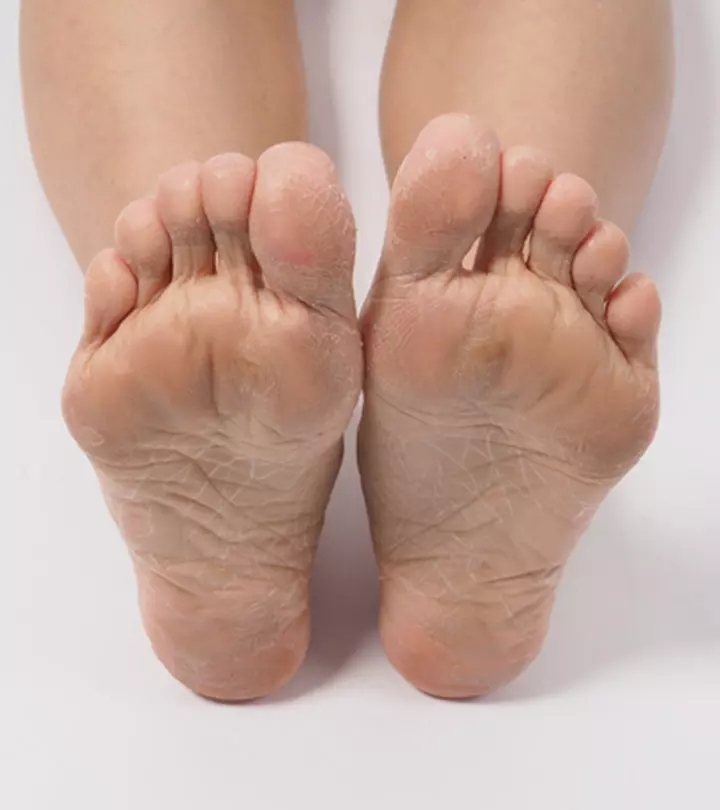


Community Experiences
Join the conversation and become a part of our empowering community! Share your stories, experiences, and insights to connect with other beauty, lifestyle, and health enthusiasts.